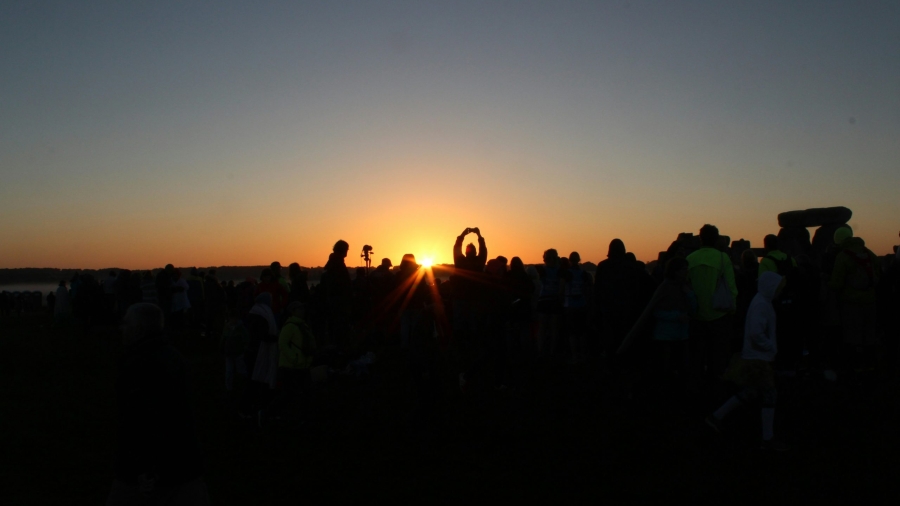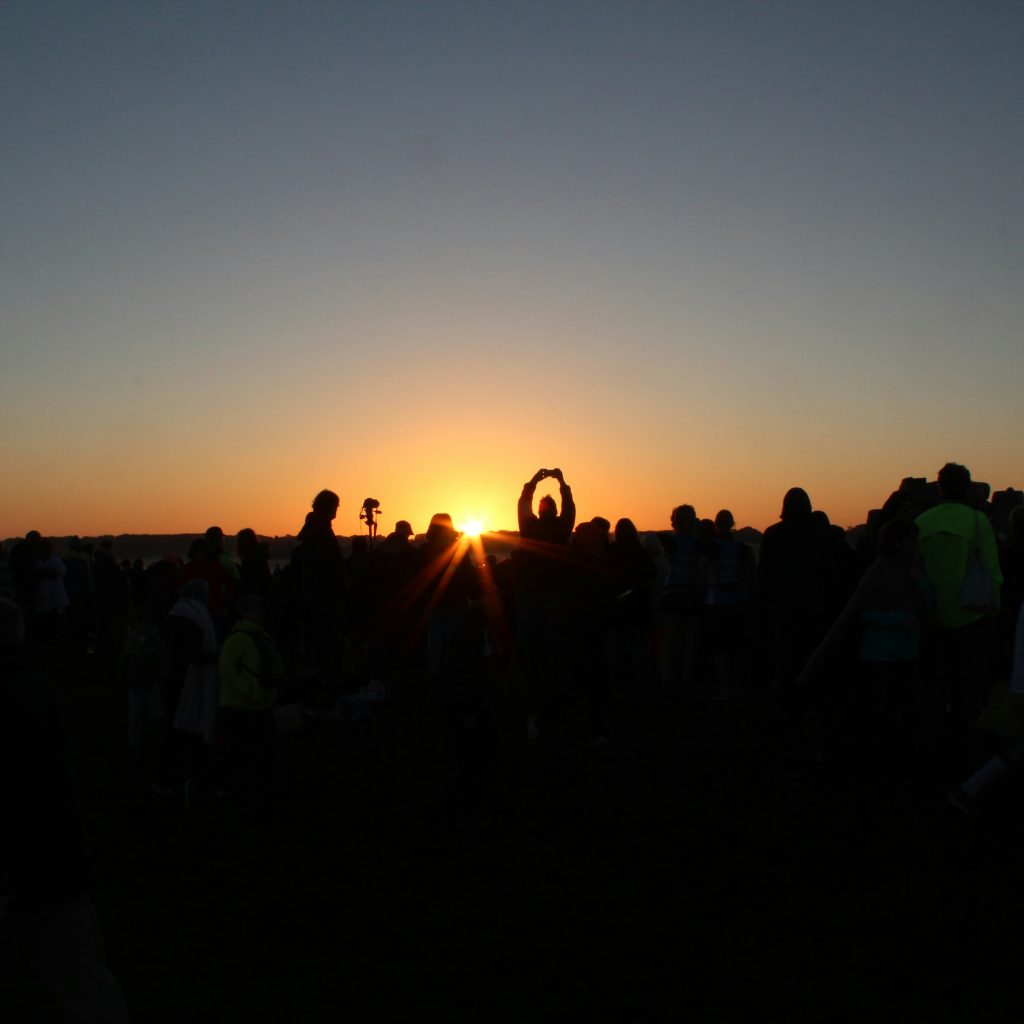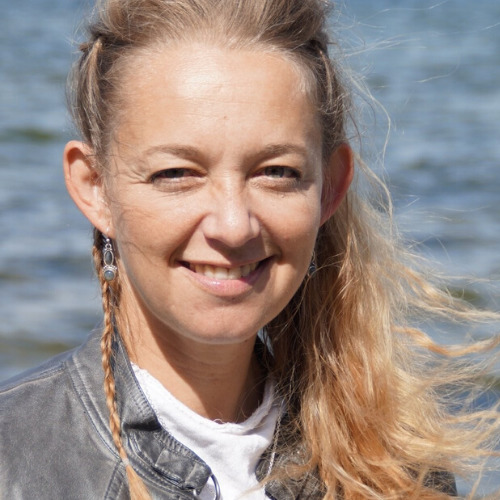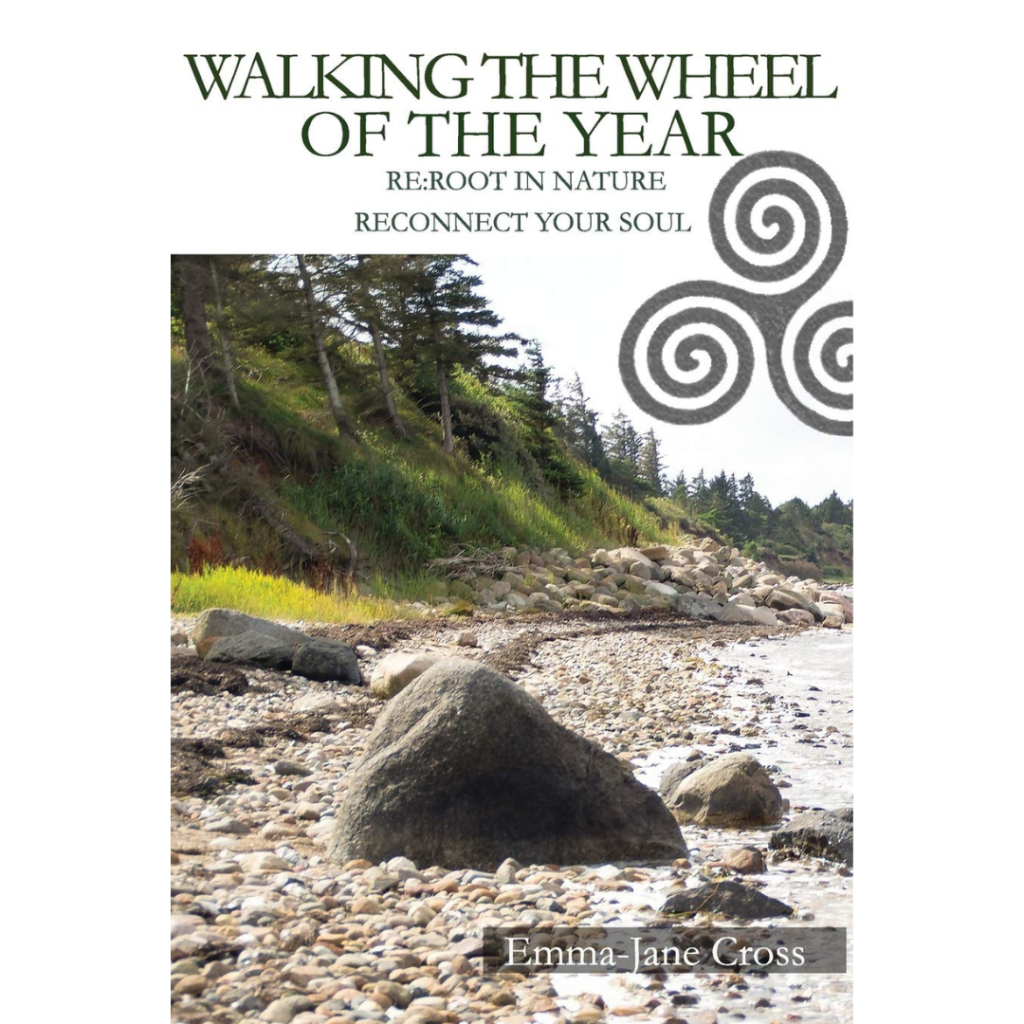By Emma-Jane Cross
As the days drift past, the sun edges closer to the north, journeying towards the pinnacle of its path. Now normally for those of us living in the northern hemisphere this would mean lazy-hazy hot days filled with sunshine, however it seems like someone didn’t get the memo this year as June 2024 is everything from grey and drizzly to stormy with hail! And although the weather
feels topsy-turvy, behind all those clouds the sun is still on its pilgrimage and thousands of people will soon be on a mission to sacred historic sites across the world to celebrate the shortest night, the Summer Solstice sunrise, and the birth of the winter sun.
Now I have to admit something to you. Although I have followed the wheel of the year for over 27 years, seen the sunrise at Stonehenge, Avebury and once from a balcony in Cannes, Summer Solstice is the festival I always used to struggle the most to connect with. I just found it difficult to understand why so many people are happy about the birth of the winter sun. I think one of the reasons could be that my path is so deeply connected to history, to my ancestors, and despite the many articles you will see about what our ancient ancestors celebrated, the truth is historically Summer Solstice is one of the festivals that we actually know very little about.
We know it was important to them. They shifted enormous amounts of stone to build incredible mind boggling structures with basic technology and a lot of manpower, ergo it was pretty important to them! But that is about it. Stonehenge, the most famous place in the world connected to the Summer Solstice, is actually one of the biggest enigmas. Myth and rumour conjure the image of Druids celebrating the Summer solstice but actually ‘3000 years lie between the Stone Age and the Druids’ (Hutton, 2008: 255). Archaeologists do know that Stonehenge was built aligned with the Solstices. And that the heel stone and a possible long-gone partner stone would have framed the sunrise on Solstice morn. And they guess that people probably
gathered there. And again that’s it. That’s all they know. Winter Solstice on the other hand there is way more information about. The avenue leading up to Stonehenge is aligned with the Winter Solstice sunrise, framed by the long gone triathlon. And in the settlement close to Stonehenge there is evidence of a gathering and feasting with pigs and cattle that were brought there over long distances ergo they held a huge and significant feast. But what the Summer Solstice meant to our ancestors is a mystery as they simply left no trace.
Now, often if the archaeologist can’t explain it, we can get a glimpse of understanding the collective spiritual meaning from myth, folk-lore, even etymology. But even here it is hard to really grasp the meaning that Summer Solstice held for our ancestors. In Gaelic, the word for Solstice is “Grianstad”, which literally translates as ‘sun-stop’. (Their explanation for the earth’s axis tilting closest to the sun.) The Anglo Saxons referred to the season where Summer Solstice fell as “Litha” meaning ‘gentle or navigable’ as it was easiest to sail at Solstice. As the Christian Church was established, Summer Solstice became St John’s day dedicated to St John the Baptist which in the 19th century was used as a day to act out the baptisms of children who had died as ‘pagans’. So unlike the festival of Ostara, where there is a traceable thread from the symbology used to celebrate Christian Easter, today right back to the original celtic beliefs, Summer Solstice goes from the stopping of the sun to fair sailing to baptism; there isn’t a tangible path to give us insight into what Summer Solstice meant to our ancestors spiritually.
What we do know is that over the world and particularly in countries of Celtic origin, Summer Solstice has an association with mysticism, magic and fire. Magic particularly was thought to be strongest at Solstice and early myths told stories of the world turning upside down or the sun standing still. And of course as Will Shakespeare embedded on the mind of every English
literature student ever, Midsummer’s eve was a night believed to be one where the fairies were afoot. The confusing thing when we look at the magical aspects of Summer Solstice that have morphed into folk-lore and countrywide traditions, is that there is a wide spectrum of themes. Some traditions resemble those of Beltane. For example, in some parts of Ireland cattle and horses were driven through the embers of the Solstice fires as a blessing or in Sweden when the traditional Midsummer events include raising and dancing around a huge maypole, both things we normally associate with Beltane. Some traditions resemble Lammas harvest rituals. In Derry a piseog (a charm) that farmers practised at Summer Solstice was to light a fire on their farm and burn some straw in it then scatter the coal around the crops and after it cows’ tails. The coal was supposed to keep away the fairies and enhance fertility. Similar customs were recorded to honour the goddess Áine, both a faery woman and a banshee, a Goddess of the Land, who was honoured on St John’s day, ‘where the peasantry used to gather from all the immediate neighbourhood to view the moon, and then with torches (cliars) made of bunches of straw and hay tied on poles used to march in procession from the hill and afterwards run through cultivated fields and amongst the cattle.’ (The Fairy Faith in Celtic Countries by W.Y. Evans-Wentz, 1911).
I have hardly scratched the surface here of the different traditions and associated themes across the world. However, it seems, at least to me, that when looking into the Summer Solstice of the past, it is truly impossible to find the linking themes that would give us insight into its collective spiritual meaning to our ancestors. The stopping of the sun, fair weather, fertility, magic,
mysticism, St John, Áine, the Oak King, the Oak tree, sun wheels, maypoles, collecting of herbs, healing, and no end of traditions involving fire, the list is truly endless. So where does that leave those of us who want to celebrate the Summer Solstice in a way that is truly akin to our Ancestors? Bottom line: We can’t. Not the way they did it. That knowledge is lost. But as anthropologist Edwin James puts it, our modern day Summer Solstice celebrations “give expression to fundamental themes in the annual sequence of winter and summer. So even if our modern day celebrations aren’t related to a neolithic or celtic pagan past, they still represent the cyclical nature of life.
When looking at the past one thing has become very clear to me that whilst we cannot find a blanket theme that defines the spiritual core of Summer Solstice, what can be seen is that multitude of Summer Solstice celebrations are very much connected to where they were held and the needs of the people celebrating them. So, to my mind, if we base our celebrations around our needs or what is important to the local community, we are in fact interpreting the Summer Solstice as our ancestors did. With the plethora of associations connected to the Summer Solstice we get the opportunity to pick and mix from traditions that make sense to us and our lives. We can make a tradition of our own connected to the Summer Solstice. Or even we can change the way we celebrate each year inspired by the different traditions as we change with the seasons of our life.
One thing that we absolutely do know is central to the Summer Solstice and that is the Sun-rise. And for thousands across the world the most authentic way of celebrating is to travel across the land to the ancient temples such as Stonehenge, Castlerigg, Ballochroy, Machrie Moor or Moel Ty Uchaf. And whilst I agree standing in one of these ancient places watching the Solstice
Sunrise is one of the most powerful ways to connect with that ancient part of ourselves I would ask that if you are one of those making that pilgrimage that you take a leaf out of our ancestors books and leave no trace. Having been a volunteer guardian at Avebury for many years I have been devastated each Solstice morn to see after the powerful sunrise the devastation left behind.
For me, over the years I have found that Summer Solstice has become more and more about taking the time to stop and stand still. I have begun to recognise this festival on the wheel of the year, more than any other, is mostly about observing the energy in myself in the community and in the place in the world I find myself in. Wherever I am, even in the middle of a busy city, I take
the time to connect with our ancestors; world view that the Summer Solstice is a moment where time stands still. Making it important to observe the sunset and sunrise, at the time where the sun briefly takes a break on its journey. It allows me to marvel at the very gift of my life. Because really, whether thousands of years ago or today, the fact that the wheel of the year keeps on turning and the sun keeps making its pilgrimage from Solstice to Solstice each year, supporting our ability to exist really is something worth taking a moment to stand still for, to observe and to be thankful for. Perhaps the key to celebrating the Summer Solstice today is ultimately about keeping it simple, personal and perhaps being thankful we don’t have to lug humongous amounts of stone across the country whilst respecting the people that did.
Ref:
Hutton, Ronald (2008), ‘Modern Pagan Festivals: A Study in the Nature of Tradition’, Folklore, 119:3, pp. 251-273.
The Fairy Faith in Celtic Countries by W.Y. Evans-Wentz in 1911.
James, E.O. (1961), ‘Superstitions and Survivals, Folklore, 72: 1, pp. 289-299.
Meet the Author
EMMA-JANE CROSS is a spiritual coach and author specialising in creating spiritual connection with nature and the wheel of the year. Her roots are in Celtic and Norse traditions, from her Welsh childhood, her training in Shamanism, Druidry and Witchcraft at Avebury, and her work as Viking historical-interpreter within Scandinavian Museums. From her home by the fjord Emma-Jane guides people worldwide to rekindle a spiritual connection and personal growth journey aligned with nature’s seasons. She teaches workshops in Denmark and online at www.rerootcourses.podia.com and regularly speaks and teaches Celtic spirituality, earth magic and seasonal spirituality at events.
On the web
Bookshelf
WALKING THE WHEEL OF THE YEAR: RE:ROOT IN NATURE, RECONNECT YOUR SOUL BY EMMA-JANE CROSS, published by Green Magic, paperback (210 pages).





